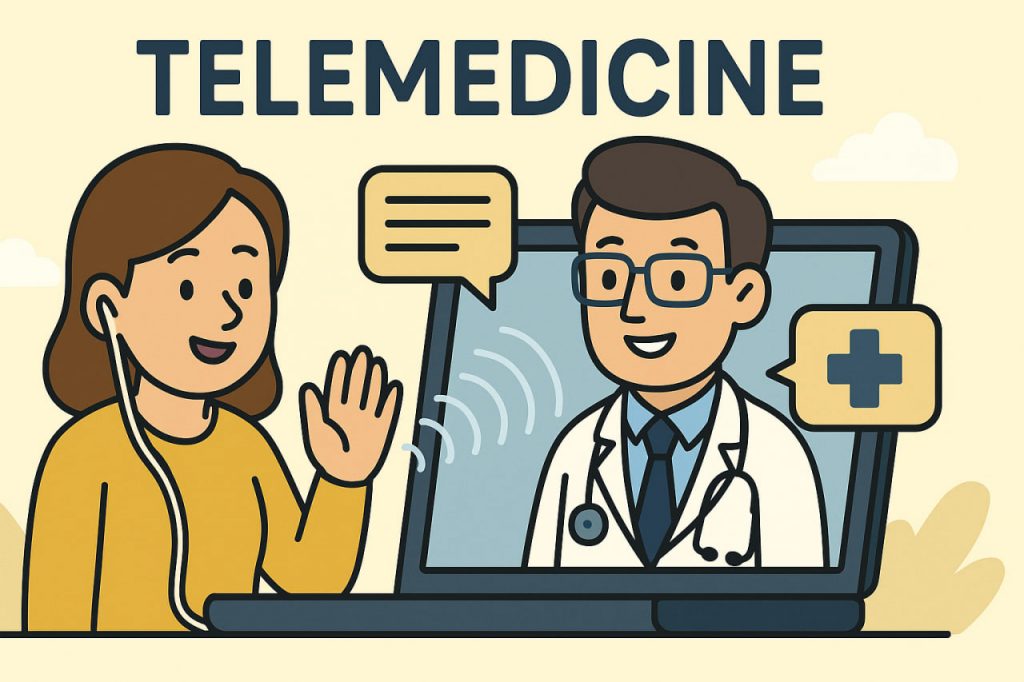Telemedicine is the use of digital technologies to provide medical services remotely. It enables patients and healthcare professionals to connect through video calls, mobile apps, or specialized platforms without the need for in-person visits. Telemedicine includes consultations, diagnosis, treatment, and follow-up care delivered virtually.
History and Development
The idea of telemedicine began in the 20th century with the use of radios and telephones to deliver healthcare advice. NASA later advanced telemedicine to monitor astronauts in space. With the rise of the internet and mobile devices, telemedicine expanded rapidly, especially during the COVID-19 pandemic, when remote healthcare became a necessity worldwide.
How Telemedicine Works
Telemedicine relies on secure communication technologies. Patients book appointments online and connect with doctors through video conferencing platforms. Wearable devices can transmit vital signs such as heart rate, blood pressure, or glucose levels. Electronic health records (EHRs) allow doctors to access patient history and prescribe medications remotely.
Benefits of Telemedicine
Telemedicine offers multiple advantages:
- Accessibility – provides healthcare to people in remote or rural areas.
- Convenience – reduces travel time and waiting in clinics.
- Cost savings – lowers expenses for patients and healthcare systems.
- Continuity of care – enables follow-ups and chronic disease management.
- Safety – reduces the spread of infectious diseases by limiting physical contact.
Challenges and Limitations
Despite its promise, telemedicine faces challenges. Not all patients have access to reliable internet or devices. Concerns about data security and privacy require robust protection of medical information. Some conditions still require physical examinations or laboratory tests, limiting telemedicine’s scope. Additionally, regulations differ between countries, affecting its implementation.
Future of Telemedicine
The future of telemedicine is closely tied to advances in artificial intelligence, remote monitoring devices, and 5G networks. AI can help analyze medical data and support doctors in making decisions. Remote diagnostics may become more accurate with smart sensors and home testing kits. As technology improves, telemedicine is expected to become an integral part of healthcare systems worldwide.
Conclusion
Telemedicine represents a revolution in healthcare delivery, making medical services more accessible, convenient, and efficient. While it cannot fully replace traditional medicine, it complements it by providing essential care in new and innovative ways. With ongoing technological progress, telemedicine will continue to expand and reshape healthcare in the 21st century.
Glossary
- Telemedicine – delivery of medical care using digital communication tools.
- Electronic health records (EHRs) – digital versions of patient medical history.
- Remote monitoring – use of devices to track patient health outside hospitals.
- Artificial intelligence (AI) – technology that analyzes data and assists in decision-making.
- 5G networks – high-speed wireless networks enabling advanced telemedicine.
- Data security – protection of sensitive patient information.


